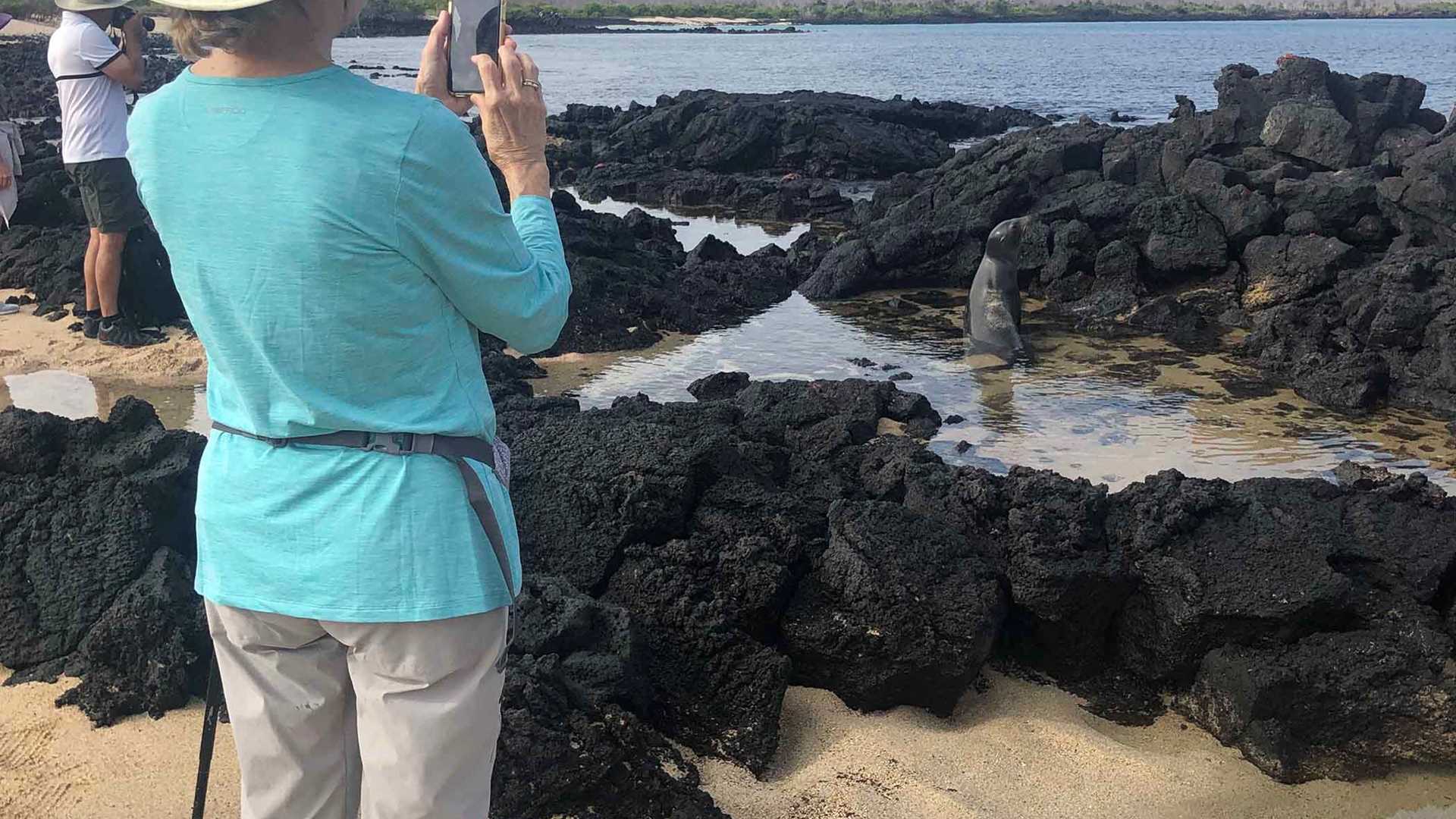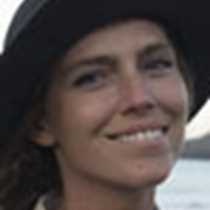Guests onboard National Geographic Endeavour II spent the day exploring Santa Cruz Island and Eden Islet. We began the day with an early morning walk at Dragon Hill, named after the abundance of Galapagos land iguanas found in the area. Before entering the dry forest, we observed a brackish lagoon known to attract sandpipers, willets, and white cheek pintail ducks. These brackish lagoons change dramatically throughout the year in terms of pH and salinity due to varying rates of precipitation and tidal inundations. This directly influences the food availability for lagoon birds, given that brine shrimp and other lagoon crustaceans thrive in high saline environments.
We observed several male land iguanas on the trail, each exhibiting their mating coloration – bright yellow and orange hues. Guests caught a glimpse of the territorial behavior of the male land iguanas as they bobbed their heads continuously at the site of other iguanas. Galapagos land iguanas are long living creatures, which makes them more susceptible to exploitation. We discussed the evolutionary history of land and marine iguanas in Galapagos and the way in which they have partitioned out the environment that allows for them to avoid outcompeting one another. The various species of iguanas in Galapagos have exploited specific food resources and habitat within a relatively small area.
After our hike to Cerro Dragon, we disembarked once again for our snorkeling outing. Guests had the option to do beach or deep-water snorkeling. Deep water snorkelers observed many tropical fish species, including giant damselfishes and scrawled filefishes. Some guests were lucky enough to snorkel with Galapagos sharks. Given that Guy Fawkes is an oceanic islet, pelagic fish tend to congregate in this area, including bonito and tuna.
Upon returning from our snorkel excursion, guests enjoyed a special Ecuadorian lunch. All of the traditional dishes were present and our hotel manager, Daniel, spoke about Ecuadorian cultures and traditions. After lunch, young explorers gathered in the lounge to participate in an activity called, “Fashion a Fish,” where we discussed the different adaptations associated with various fish species.
In the afternoon, guests enjoyed an incredibly interesting talk given by a National Geographic Explorer in residence – the man who discovered the famous human ancestral species, “Lucy.” The lecture was about Charles Darwin, focusing on the road that led him to publish one of the most important scientific publications of all time. It was an incredible treat to listen to such a talented orator.
In the evening, guests enjoyed a wine tasting event on the observation deck as we circumnavigated Daphne Major. This island is an evolutionary institution; the most comprehensive evolutionary biology study known to humans was conducted on this very island.









